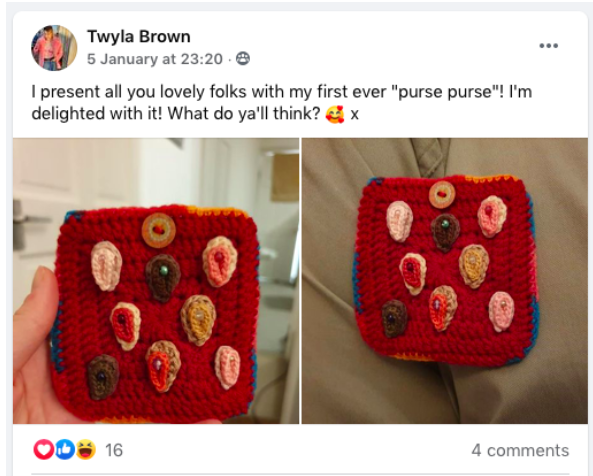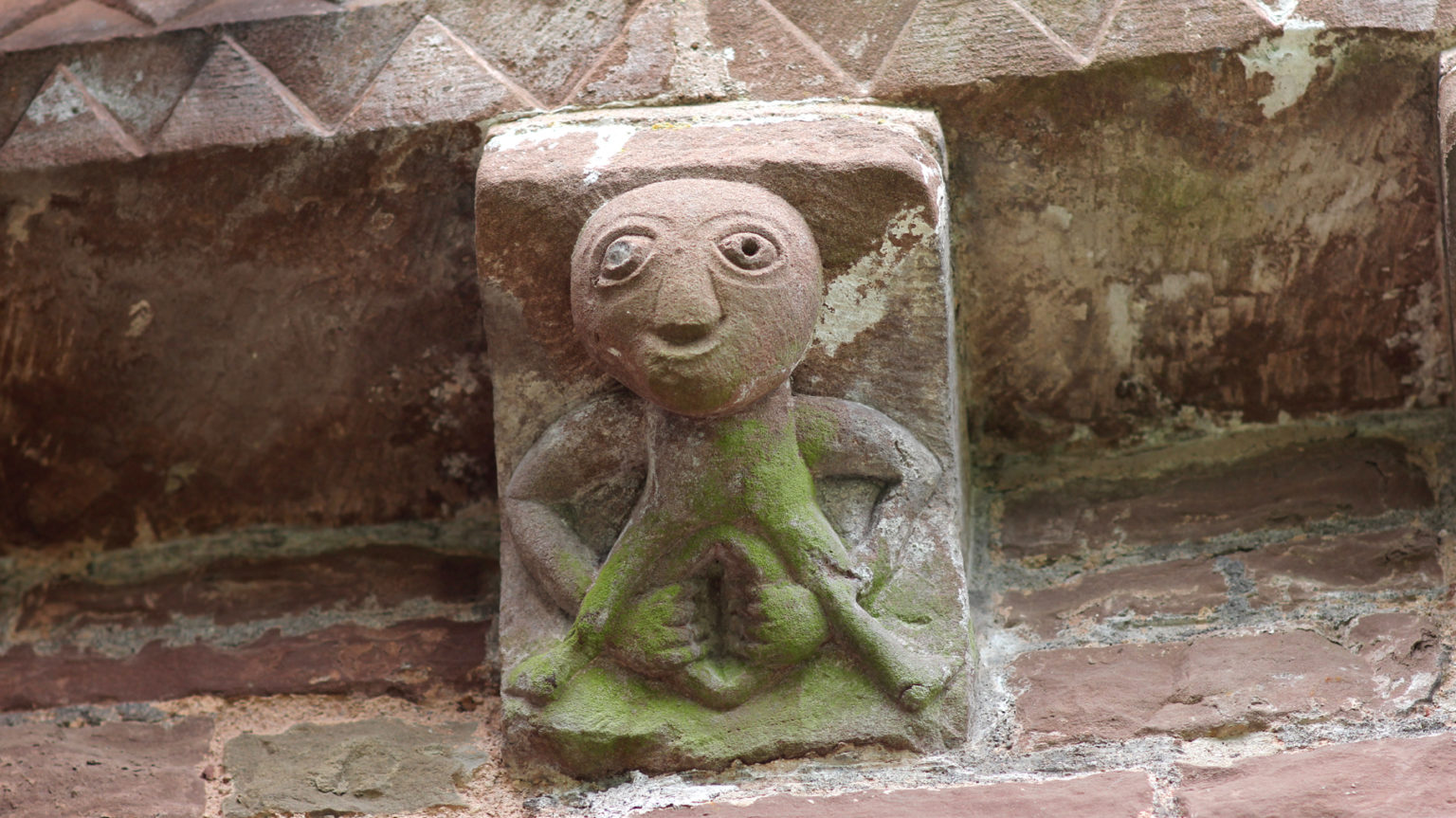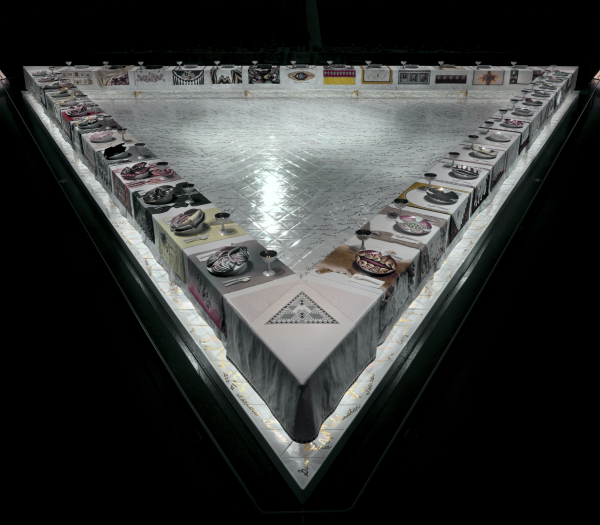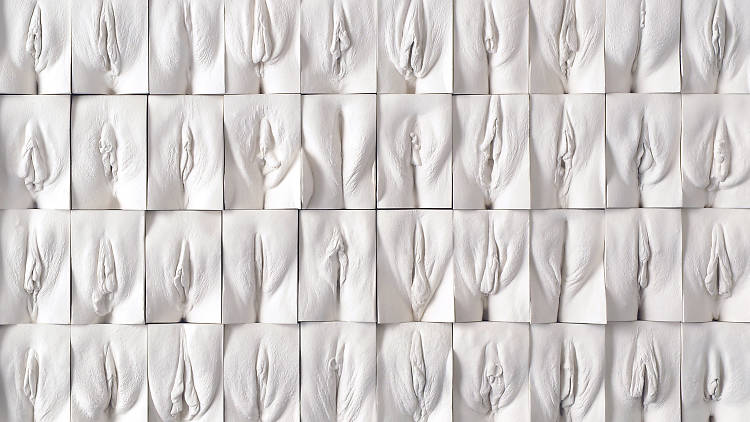We use cookies to make your experience better. To comply with the new e-Privacy directive, we need to ask for your consent to set the cookies. Learn more.

The Rise and Rise of Vulva Art
Back in 2018 a video erupted onto the internet, a rose tinted desert, soft, catchy vocals, a Cadillac filled with beautiful women wearing…..vulva trousers. Yes Janelle Monae’s self love anthem PYNK may well have been the peak of mid 2010s vulva mania. Vulva art has been everywhere. London’s newly opened Vagina Museum sports quite an impressive gift shop to prove this, vulva pins, vula t-shirts, an animated vulva giving the middle finger. While vagina and vulva art is not a new thing in this world, it’s presence in the craft world (and popular media) is synonymous with 2010s feminism; vulva pillows, vulva cross stitch, little videos of people fingering vulva-shaped fruit, the Shoreditch WI making vulva blankets. This was the message of the era If you’ve got a vagina, please wave it. The world wants to see.
One just needs to do a quick facebook search *cough* - ‘Lady parts appreciation arts and education’ - to find a feed of vulvas. Just before Christmas another facebook group called ‘Not on Amazon’ was set up by an artist wanting to see more cottage industry crafts, and to give a decent platform to artists and small businesses. It is hard to ignore the high percentage of the crafts and art peices being uploaded, were in celebration of the female form - specifically the vulva.

Crochet Purse by Twyla Brown, Facebook group 'Lady parts appreciation arts and education '
Both depiction and celebration of the female form, especially the genitals, is no new thing. Sheela Na Gig and other ancient stone carvings date back to the 12th century. Leonardo da Vinci's anatomical drawings (albeit he got it damn wrong) and life modeling in general is, as old as the hills.

Sheela Na Gig, found in Kilpeck Church near Hereford
While Georgia O’Keefe denied the Freudian connotations of her vulvic flower paintings, her sensual images (which do look like vulvas) inspired feminists to laud her as the mother of female iconography. Whether intentional or not, O’Keefes up close paintings of nature won her a seat at Judy Chicago’s Dinner Party. Dinner Party, which is permanently housed in the Brooklyn Museum depicts famous and important women in history with vulvas styled to represent their characters. While praised by many for its celebration of women, Dinner Party came under scrutiny for its lack of intersectionality. The only woman of colour at the table is Sojourner Truth, and instead of a vulva she is depicted with faces. Alice Walker said in critique of the piece, “The Sojourner Truth plate is the only one in the collection that shows-instead of a vagina — a face. In fact, three faces. … It occurred to me that perhaps white women feminists, no less than white women generally, cannot imagine that black women have vaginas.”

Dinner Party By Judy Chicago
However it is the rise to prominence of vulva specific art that popped through every piece of toilet graffiti and etsy account throughout the 00s which highlights our questioning. Has vulva art only endeavoured to talk about female genitalia by means of backlash to socialicial pressures and invisibility or has it moved into someplace new, have they been socialised into the wider world, do we now have the vocabulary we once lacked? In 2008, artist Jamie McCartney created ‘The Great Wall of Vagina’. Jamie put together the moulds of 400 vulvas in response to many models he was working with being unsatisfied with the appearance of their genitals. The show proved a clear and important example of how no one vulva is the same. Impressively disappointing to note not a single vagina amongst these 400 vulvas. This may have been one of the catalysts of the conversation around the demand for the correct words to be used when naming the female anatomy. The gift kept on giving and home moulding kits became available for anyone to take part.

Great Wall of Vagina By Jamie McCartney
In 2016, Hilde Atalanta, an artist and activist set up an instagram account called ‘The Vulva Gallery’. Inspired to do so after discovering the huge rise in labiaplasty surgery (the surgical procedure that alters the aesthetic appearance of the labia and/or clitoral hood). These google searches are not only from adults, but children as young as 9 years old. While some may name this art as vulgar or unnecessary, Hilde’s work highlights the importance of openly discussing what is ‘normal’ from the point of view of mental wellbeing. Hilde isn’t just an artist, but an important educator. On their website you will be able to download a whole host of Educational Sets on the anatomy and health of the vulva. Many times photos that are shown in schools of vulvas, would be photos showing deformity or illness. While Vulvas in pornography are often sugically enhanced.

Taken from The Vulva Gallery By Hilde Atalanta
The Vagina Monologues addressed this issue back in 1996, that women were only just starting to look at their own vulvas, that they needed a community and a culture. Her opening monologue,
“I bet you're worried. I was worried. That's why I began this piece. I was worried about vaginas. I was worried about what we think about vaginas, and even more worried that we don't think about them. I was worried about my own vagina. It needed a context of other vaginas-a community, a culture of vaginas. There's so much darkness and secrecy surrounding them-like the Bermuda Triangle. Nobody ever reports back from there.”

Viva By Juliana Notari
While vulva art continues to stamp itself into crochet brooches, cupcakes and paintings. It still faces a great deal of controversy. Juliana Notari’, a Brazilian artist, unveiled her handmade sculpture named ‘Diva’ at a rural art park in Brazil. This 33-meter artwork has been hugely controversial between left and right winged cultural communities while Anish Kapoor’s ‘The Queen’s Vagina’ has been continuously vandalised. Japanese artist Megumi Igarashi has been arrested for her vulva themed artwork while phallus sculptures are commonplace. While many aspects of vulva art have been criticised for their cisnormative reiterations of white feminism, it is easy to poke holes in their abundance. However, it is undeniable the community for vaginas is growing, in conversation about normality to the artworld, as stated by artists such as Alli Sebastian Wolf (The Glitoris) in art, they simply want depictions of the vulva to be as commonplace as penises. At this rate, they might just be...
Written by Heather Sanderson, edited by Lydia Breadmore
